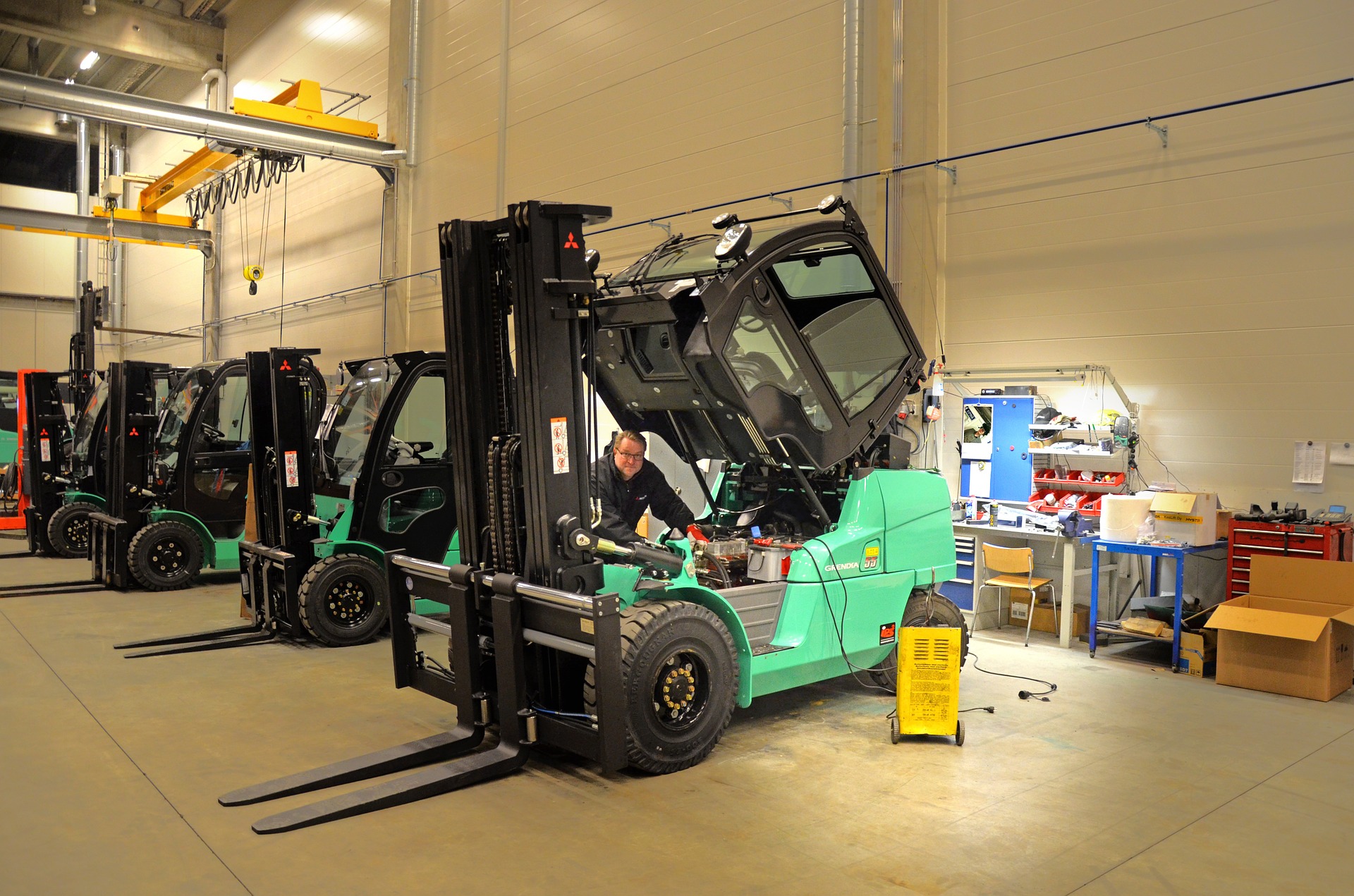Why Idle Equipment Could Be Costing You
Operating and managing a large fleet can be a complicated endeavor because there is so much involved in it. We’ve just scratched the surface in our previous blogs — and there are still a million things to consider. The result can be that a fleet manager could become too focused on some things and forget to consider others.
One part of fleet management that must not be ignored is dealing with idle equipment. Perhaps at first blush, idling appears reasonable and common. A forklift operator keeps the engine running as he walks the shelves to pick orders. Alternatively, a driver leaves the vehicle with the engine running while he quickly delivers a package to a retailer or some other business.
Idle equipment management is an essential part of fleet management. The costs incurred by idling, regardless of the reason, can be higher than you might be able to calculate. There’s the gasoline being wasted, so more fuel costs, but also thinking of the adverse effect on the environment — your carbon footprints!
Idle equipment gets zero miles per gallon, and each gallon consumed when idling equals 20-pounds of CO2 dumped into the air.
When Does Idle Times Occur?
You could experience a eureka moment when you consider all the times one fleet vehicle is operating in idle, and each occurrence has a significant impact on costs. Moments a fleet vehicle is in the idle state include:
1. Stopped in traffic
2. Unloading and/or loading packages or other items with the engine running.
3. During times when the driver is doing paperwork parked at a curb after delivery or pickup.
4. When the driver is talking on the phone.
5. When merely warming up the engine on a cold day.
6. When warming up or cooling down the interior of the vehicle during winter or summer to achieve a comfortable environment for the driver.
All vehicles in your fleet are experiencing these idling circumstances. So multiply the effect of idling on one fleet vehicle with the number of vehicles of your fleet — now that certainly would be a eureka moment! Telematics can detect when vehicles are idle for too long and it can be shut down remotely to avoid wasting fuel. The cost savings would be substantial.

Benefits Of Reducing Idle Time
Reducing the idle time of your fleet offers several benefits including:
1. Reduction of fuel use that results in fuel cost savings and the reduction of harmful emissions.
2. Reducing engine wear, resulting in an increase in the capital value of fleet equipment and ensuring better reliability of equipment.
3. Reduction of noise.
4. Improving air quality in work areas.
Although the idle time of a fleet vehicle indeed depends on the type of vehicle involved and the routine of the driver, the estimated average idle time for a vehicle is about 25 percent of the vehicle’s full operating time.
The idle time for warehouse or factory equipment can be longer. Some studies show that maintenance graders and loaders can be idling up to 40 percent of their total operating time. Construction machinery can spend up to 30 percent full operating time on idling.
How Idle Time Effects Costs
Pull out a calculator and do some computations, and you may be surprised at the actual waste in costs that idling has on your budget. Consider this:
1. An idling standard passenger vehicle can lose about a third of a gallon to more than half a gallon of fuel per hour.
2. An idling 2 to 8-ton truck can be losing three-quarters of a gallon of fuel per hour.
3. An idling 8 to 16-ton truck can be losing more than three-quarters of a gallon of fuel per hour.
4. An idling truck that weighs more than 16-tons can be losing more than one gallon of fuel per hour.
5. An idling semi-trailer truck can be losing more than one gallon of fuel per hour.
Now consider the actual costs. If you run the numbers you’ll find that:
1. A typical truck that idles for 25 percent of its operating time loses $2,500 of fuel a year.
2. An idling wheel loader on average can lose $12,000 worth of fuel a year.
Idling time on fleet equipment doesn’t only cost you on fuel. It also costs you on maintenance. Combined idle time results in more wear on the engine.
Idling’s Effects On Maintenance
Some have guessed that one-hour of idle time equals about 25 miles of driving. If you have vehicles in your fleet that require an oil change every 4,960 miles and they are driven 80 miles a day, then you will have to change the oil every 100 days.
The engine of a vehicle that idles for about one hour a day adds extra wear to the engine that is equivalent to an extra 25-miles of travel per day. So, after just 100 days, the engine will wear an equivalent of 7,440 miles. That is 50 percent more driving miles that the vehicle’s manufacturer would recommend for each oil change. This can result in reliability problems that can lead to more downtime of the vehicle, lost productivity, and the rise in costly repairs.

The added cost of idling doesn’t end there. The problem can also affect the resale value of the vehicles or equipment of your fleet. You may not be aware that idle time speeds up the depreciation of the vehicle or other equipment. An idling vehicle could be valued $30,000 less if it has 10,000 hours on the meter while a similar vehicle that has 25 percent less idling time will register about 7,500 hours on the meter.
Besides, idling has environmental costs. As a vehicle in your fleet consumes fuel, the emissions that result are harmful to the air. For those of you who think idling has less an effect on the environment than continually turning the engine of a vehicle off and on, the truth is that you create more emissions idling for just 10 seconds than you do when turning the engine off and then back on.
Reducing Fleet Idling Time
So now that you know what idling time of your fleet is doing to your company’s bottom line, you need to come up with ways to reduce it, or even eliminate it.
Educating your drivers is an essential part of reducing idling costs. Fleet management needs to teach and encourage their drivers and equipment operators to turn off the engine when the vehicle or machinery is sitting idle.
If idling is a preeminent issue for your fleet, then it may be worthwhile to consider adopting telematics devices that turn off the engine when the vehicle is idle for too long.
 Moreover, incorporating telematics devices onto your fleet will help monitor vehicle operation to determine under what circumstances idling with the engine on occurs. Reports generated by this technology when integrated with a cloud application software can assist fleet managers in changing driver routine that reduces the incidences of idling and thus save you on costs.
Moreover, incorporating telematics devices onto your fleet will help monitor vehicle operation to determine under what circumstances idling with the engine on occurs. Reports generated by this technology when integrated with a cloud application software can assist fleet managers in changing driver routine that reduces the incidences of idling and thus save you on costs.
Access Control Group has telematics devices, Advanced and Vital, that assist fleet management staff to identify periods when equipment or a vehicle is idling. The cloud application, AssetPro 360, generates reports that assist fleet managers to pinpoint these occasions and then take action to reduce the occurrences of idling among the equipment of a fleet.
For more information on Access Control Group and its devices, contact an Access representative today at 908-789-8700.
